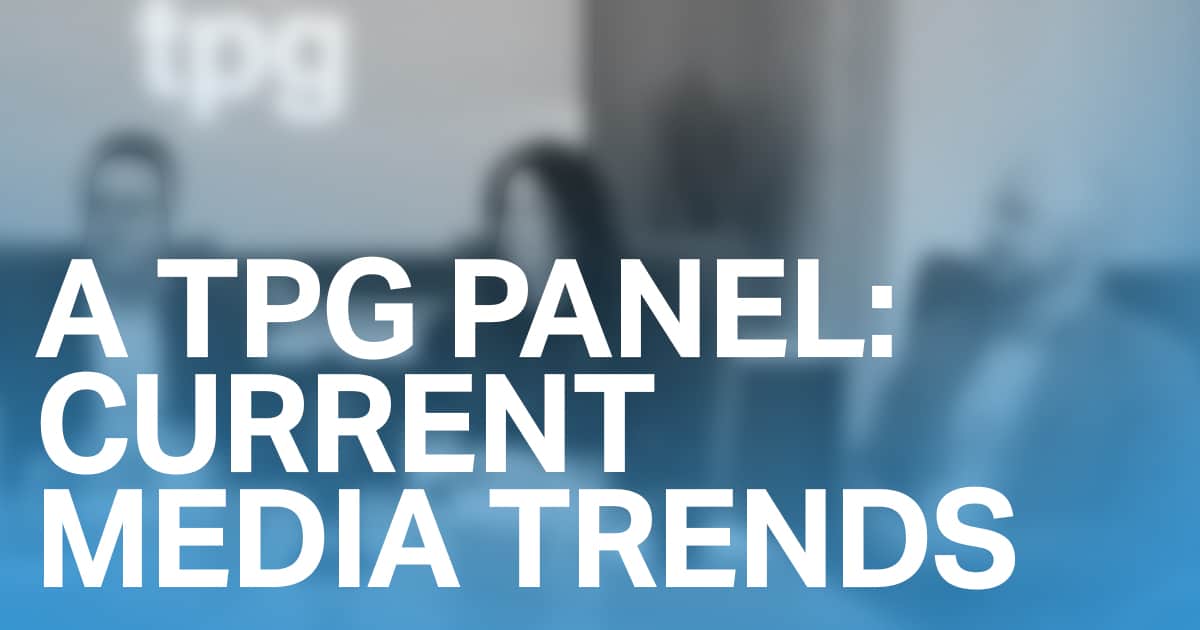The media landscape is constantly evolving, and keeping up with the latest trends and changes is crucial. In late January, The Point Group organized a media panel discussion among key representatives in radio, TV, and digital media. The panel features Kevin Rachel from KTCK – The Ticket Sports Radio, Juliann Delozier from WFAA TV – ABC, and Casey Robertson from KDFW – Fox 4 TV. The panel was hosted by Ann Rimkus, EVP of Strategy and Media Insights for The Point Group. The panel was designed to discuss 2023 trends in media habits and offer marketers advice for navigating the ever-evolving media landscape in the new year.
The panel began by discussing the current trends in media consumption. Kevin Rachel noted that with the rise of streaming services, podcasts, and social media, people are consuming media programming (news, sports, and entertainment) in a much different way than they did just a few years ago. Casey Robertson added that people are also looking for a more dynamic approach – programming that has behind-the-scenes editorial and extended content available online. Traditional forms of media like television and newspapers are still relevant, Juliann Delozier explained, and evolving to appeal to the up-and-coming younger influencers without alienating their more senior counterparts. They all agreed that relevant content is key to keeping audiences engaged.
The panel then discussed the importance of understanding target demographics. Each panel member shared their experiences with some real world examples of how crucial it is for media buyers and planners to understand their audiences and touched on how media is being consumed in new ways. The traditional Adults 25-54 demographic no longer means one size fits all – a 25-year-old consumes media differently than a 54-year-old. Advertisers are having to adapt and broaden their traditional buys to include more nontraditional media to gain reach and build frequency. Stations are having to evolve to provide programming and content that appeals to niche target demos without alienating their core demo. The panel guests noted and agreed that their local news programming was changing in format to address this shift in audience appeal.
Impressions were also discussed as a new focus for media metrics. Ann Rimkus pointed out that traditional media is now measured in terms of impressions to align with digital media and corresponding CPMs, causing a shift in how buyers use Target Rating Points to make media buy decisions for their clients. The panel agreed that while impressions are important, not all impressions are alike – the editorial environment and the consumer mindset should also be considered as critical components in the decision process.
The importance of balance in media buying was also a key topic of conversation. The panel talked about examples from automotive, health care, and travel, pointing out that when brands choose one form of media over another, the buy is not balanced enough to have its strongest impact. They also elaborated upon the shift from automotive dominance to furniture and pharmaceutical advertisers and how understanding the way each media platform addresses the consumer purchase pathway is an essential part of media strategy. Focusing too much on any one platform could miss a key demographic or, worse, a key point in purchase consideration. Traditional media can provide the air cover a brand needs to drive marketplace awareness, while digital media captures intent and provides the power of reaching consumers when they are ready to buy.
The panel then addressed the biggest mistakes that they see being made today:
- Using the same strategy from three years ago
- Reallocating their traditional media budget to the point of diminishing return
- Focusing only on the bottom funnel (ready-to-buy) consumers through digital-only buys
- Not taking the time to understand how their target audience consumes multiple platforms
- Not being open to adjusting their buys to cover a broader market
- Thinking that one size fits all (there is no silver bullet)
- Not leveraging the opportunity to test before going all in and possibly losing brand momentum built over the years
Finally, the panel offered some advice for the new year for media buyers and planners. Juliann Delozier encouraged media buyers to always be willing to consider new ways to reach their audiences as well as staying abreast of changes in the media landscape. More importantly, she added that buyers need to be aware of how traditional media outlets can provide well-rounded avenues to reach the same audience in different ways. Kevin Rachel emphasized the importance of being flexible and adaptable, as the media industry is constantly evolving, and Casey Robertson added that it is also important to be authentic and to stay true to your brand and your values; building a loyal audience over time is still key to successful marketing. He noted that making too many shifts at one time could negatively impact a brand in terms of visibility and recognition, and that is how competitors can swoop in and capture valuable market share.
Tune in and spend time with the eight episodes of this distinguished media panel with valuable insights into the current state of the media landscape, as well as tips and advice for media buyers and planners who are looking to stay ahead of the curve. The Point Group will continue to share media trends and insights throughout the year. If you would like to review your media strategy, we can help you navigate these trends and develop a plan that reaches your target audience and addresses your business needs. Reach out to us and let’s get the convo started!




